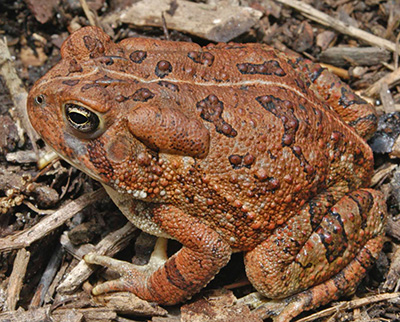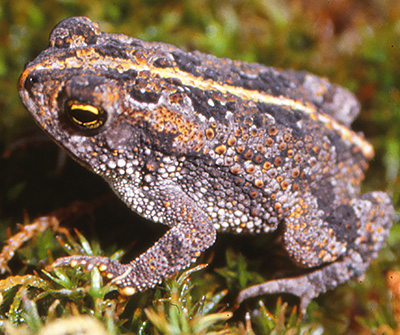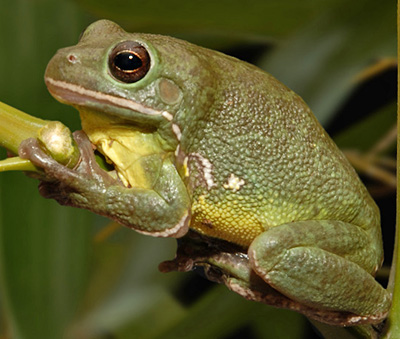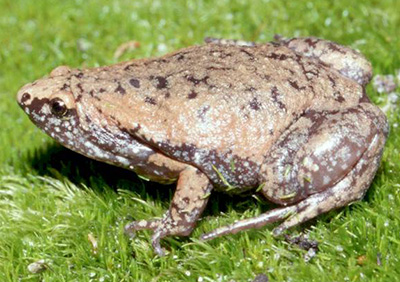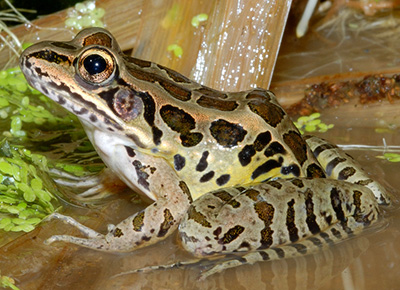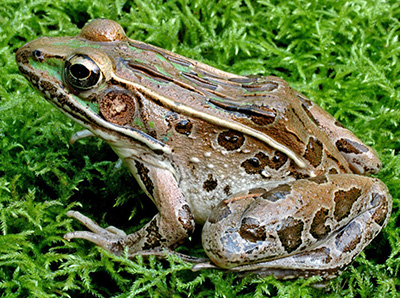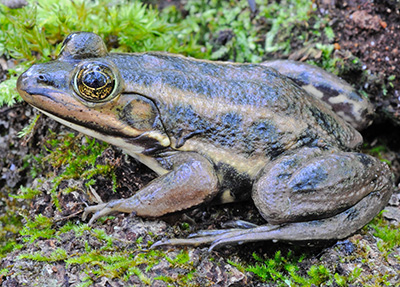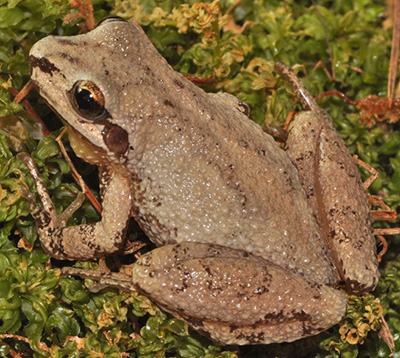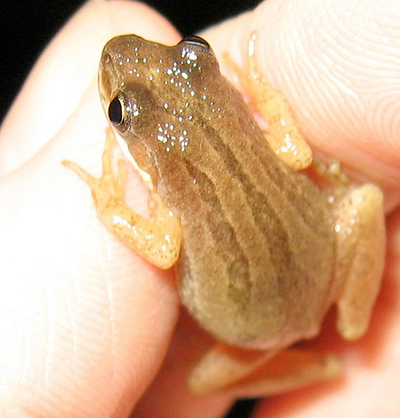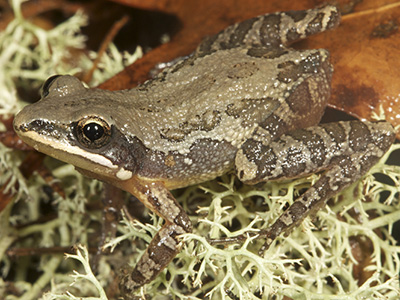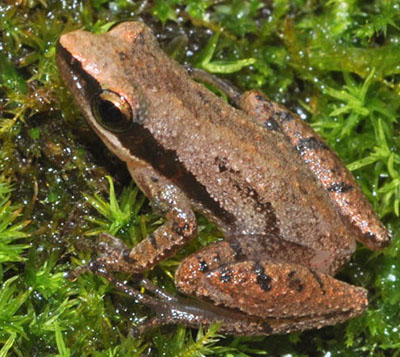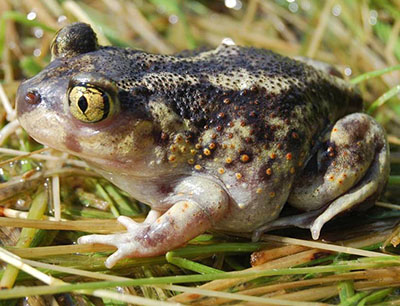Frogs & Toads of Virginia
Virginia Frog & Toad ID Guide Frog Development Chart Frog Calling Schedules Frog Call Quiz
Frog & toad calls copyright Lang Elliott - www.musicofnature.com
Eastern Cricket Frog
(Acris crepitans)
Average Length: 0.6 - 1.4 in. (1.6 - 3.5 cm)
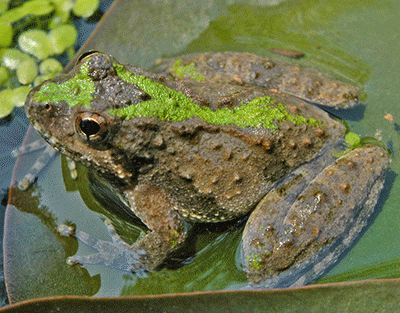
Calls April - August
Southern Cricket Frog
(Acris gryllus)
Average Length: 0.6 - 1.25 in. (1.6 - 3.5 cm)
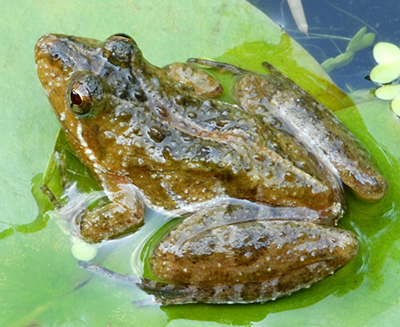
Calls April - August
Eastern American Toad
(Anaxyrus americanus americanus)
Average Length: 2 - 3.5 in. (5.1 - 9 cm)
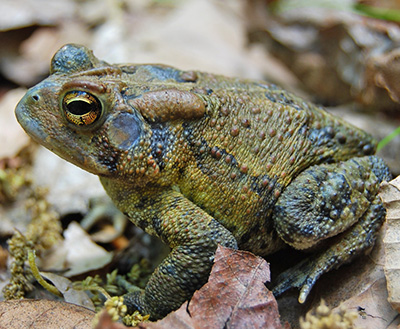
Calls March - August
Southern Toad
(Anaxyrus terrestris)
Average Length: 1.6 - 3 in. (4.1 - 7.5 cm)
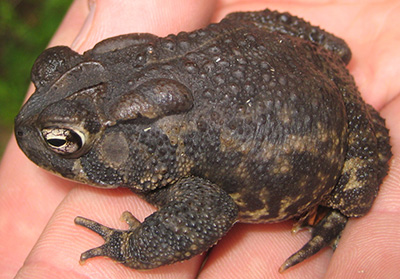
Calls April - September
Cope's Gray Treefrog
(Dryophytes chrysoscelis)
Average Length: 1.25 - 2 in. (3.2 - 5.1 cm)
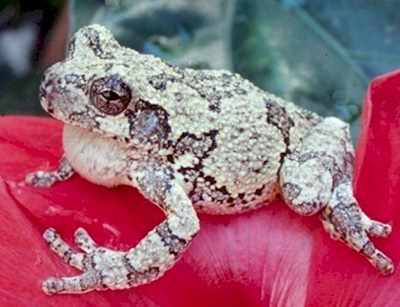
Calls April - August
Our two native gray treefrogs are identical in appearance. In the field the only two ways to distinguish D. chrysoscelis from D. versicolor is by their call and in some cases geographic location.
Green Treefrog
(Dryophytes cinereus)
Average Length: 1.25 - 2.25 in. (3.2 - 5.7 cm)
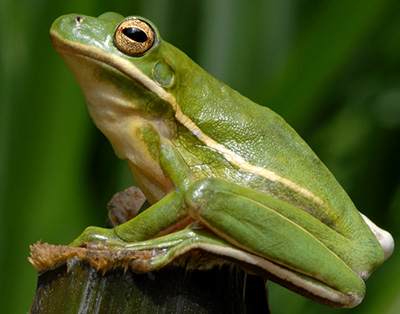
Calls April - August
Pine Woods Treefrog
(Dryophytes femoralis)
Average Length: 1 - 1.5 in. (2.5 - 3.8 cm)
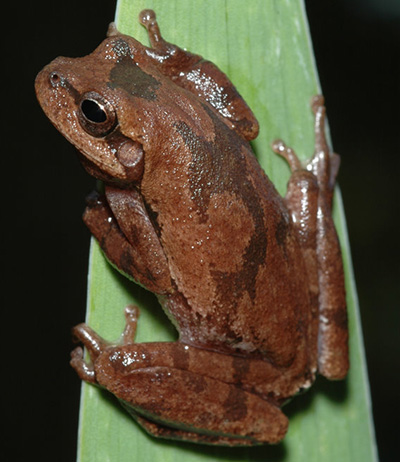
Calls May - August
Squirrel Treefrog
(Dryophytes squirellus)
Average Length: 0.9 - 1.6 in. (2.2 - 4.1 cm)

Calls April - August
Gray Treefrog
(Dryophytes versicolor)
Average Length: 1.25 - 2 in. (3.2 - 5.1 cm)
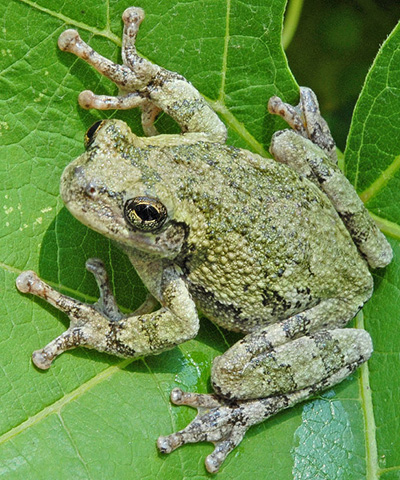
Calls April - August
Our two native gray treefrogs are identical in appearance. In the field the only two ways to distinguish D. chrysoscelis from D. versicolor is by their call and in some cases geographic location.
North American Bullfrog
(Lithobates catesbeianus)
Average Length: 3.6 - 6 in. (9 - 15.2 cm)
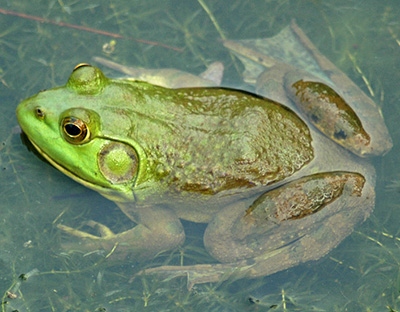
Calls May - August
North American Green Frog
(Lithobates clamitans)
Average Length: 2.25 - 3.5 in. (5.7 - 9 cm)
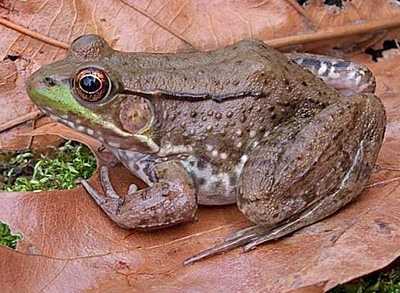
Calls May - August
Atlantic Coast Leopard Frog
(Lithobates kauffeldi)
Average Length: 2 - 3.5 in. (5.1 - 9 cm)
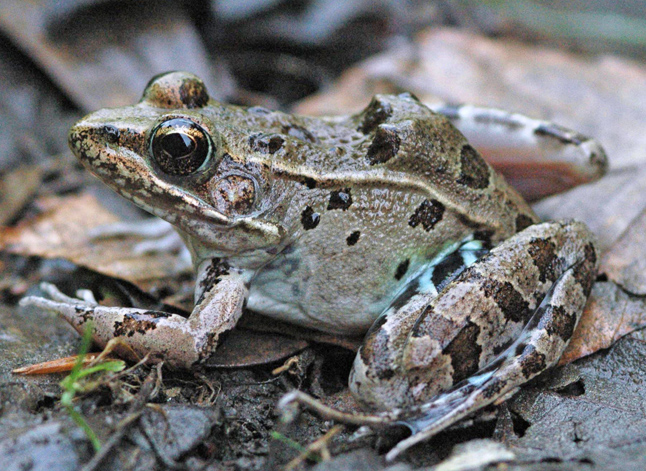
Calls March - May
Calls March - August and in October
Wood Frog
(Lithobates sylvaticus)
Average Length: 1.4 - 2.73 in. (3.5 - 7 cm)
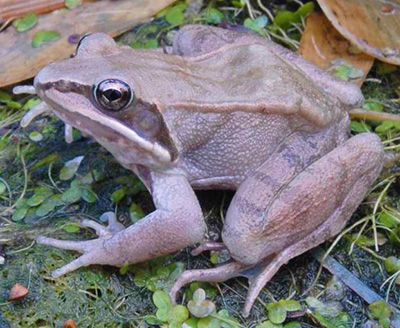
Calls late January - April
Brimley's Chorus Frog
(Pseudacris brimleyi)
Average Length: 0.75 - 1.25 in. (1.9 - 3.2 cm)
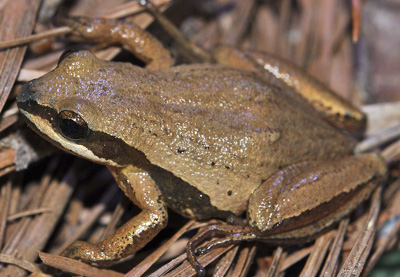
Calls February - April
Spring Peeper
(Pseudacris crucifer)
Average Length: 0.75 - 1.25 in. (1.9 - 3.2 cm)
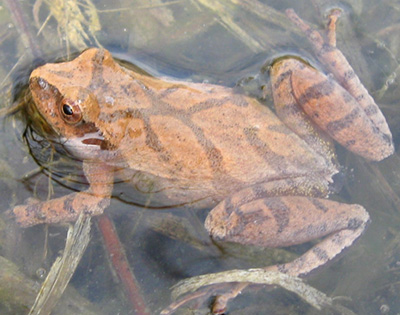
Calls February - June and in October
Upland Chorus Frog
(Pseudacris feriarum)
Average Length: 0.75 - 1.4 in. (1.9 - 3.5 cm)
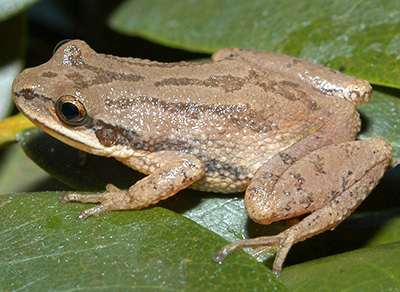
Calls February - May
Calls February - April
Virginia Wildlife Action Plan Rating Tier IV - Moderate Conservation Need - The species may be rare in parts of its range, particularly on the periphery. Populations of these species have demonstrated a significant declining trend or one is suspected which, if continued, is likely to qualify this species for a higher tier in the foreseeable future. Long-term planning is necessary to stabilize or increase populations.
Virginia Wildlife Action Plan Rating Tier III - High Conservation Need - Extinction or extirpation is possible. Populations of these species are in decline or have declined to low levels or are in a restricted range. Management action is needed to stabilize or increase populations.
Virginia Wildlife Action Plan Rating Tier II - Very High Conservation Need - Has a high risk of extinction or extirpation. Populations of these species are at very low levels, facing real threat(s), or occur within a very limited distribution. Immediate management is needed for stabilization and recovery.
Virginia Wildlife Action Plan Rating Tier I - Critical Conservation Need - Faces an extremely high risk of extinction or extirpation. Populations of these species are at critically low levels, facing immediate threat(s), or occur within an extremely limited range. Intense and immediate management action is needed.
Conservation Opportunity Rankings:
a - On the ground management strategies/actions exist and can be feasibly implemented.
b - On the actions or research needs have been identified but cannot feasibly be implemented at this time.
c - No on the ground actions or research needs have been identified or all identified conservation opportunities have been exhausted.
